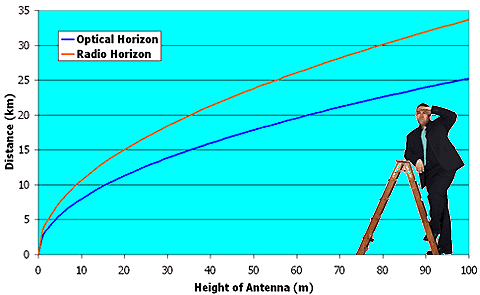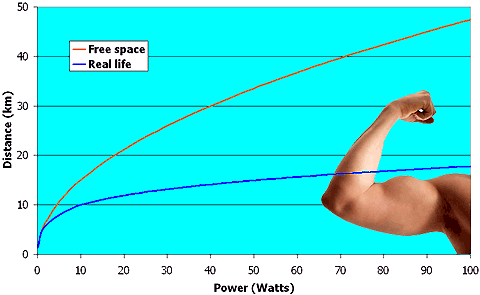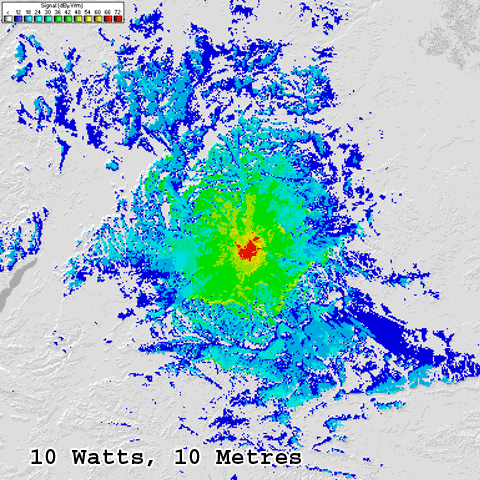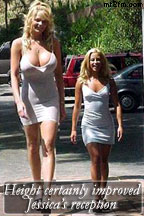Tuesday 10 August, 2010, 05:17 - Broadcasting
Posted by Administrator
One of the most common questions that the Wireless Waffle team are asked by those setting up radio transmitters is, "How much power do I need to cover an area X miles wide?". Such a question is virtually unanswerable as there are so many factors to take account of including the frequency of operation, the topography of the area, the kind of structures (buildings, trees) which are in the required coverage area, what kind of receivers people are using and much more. The observant will note that these factors are not ones which can necessarily be changed by the person operating the transmitter - unless they fancied chopping down a forest for example. What can be changed at the transmitting site are two relatively simple factors: the height of the antenna, and the power of the transmitter.Posted by Administrator
Such discussions therefore end up focussing on how high the antenna needs to be and what power the transmitter should be. But which is most effective in increasing coverage: height or power?
Let's tackle height first. Assuming we are trying to provide a signal over the earth and that there are no obstacles at all and that the earth has no undulations (hills and so on), then the range of a transmitter can easily be calculated from a simple line-of-sight rule. This tells us that for a particular height above the ground, the horizon (and thus the edge of the coverage area) will be a specific distance away. One oddity in this is that radio signals tend to get defracted a little by the Earth's atmosphere which has the effect of making the planet appear slightly less curved and thus extends the radio horizon about a third beyond the optical horizon. The chart below shows the optical and radio horizons for a transmitting antenna mounted at a certain height.

With an antenna about 10 metres above the ground, the radio horizon is about 10km away. If the height of the antenna is increased to 50 metres, the radio horizon increases to about 24 km - a very healthy improvement. It's perhaps worth noting that 'height above ground' could be generated by raising the height of the antenna, or by mounting it on top of heigh point (eg a hill).
Increasing the transmitter power also increases coverage, but not in quite the same way. Getting signals much beyond the radio horizon relies on various odd propagation techniques including refraction, defraction and scatter. In free space, increasing the power by a factor of 2 will increase the distance at which the signal is of equal strength by the square root of 2. So, if the signal is 30 dB at a distance of 10km, increasing the power by a factor of 2 will move the point at which the signal is 30 dB to a point approximately 14km away from the transmitter. Sadly, the Earth is not generally a 'free space' environment and signals fall away much quicker than this, even before the horizon is reached. The chart below shows a simulation of coverage for different transmitter powers, assuming an antenna height of 20 metres.

The distance to the radio horizon for a 20 metre heigh aerial is 15 km and in 'free space', in this example, this is reached by a power of 10 Watts. For the 'real life' example, 10 Watts only achieves a distance of around 10 km because of the fact that the Earth is not a free space environment. To achieve 15 km in 'real life' requires a power of nearer 50 Watts. What is immediately clear is that enormous increases in power are required to extend coverage. Even with 100 Watts, in our theoretical example, the distance acheived is still less than 20 km.
Increasing the height of the transmitting antenna is therefore, theoretically, a much more effective way of increasing coverage than turning up the power. Of course, it's not always possible to put up a high antenna, and in this situation more power is clearly better, but in general height wins every time. To show the difference, the map below (made using Radiomobile) shows the coverage for a transmitter nominally located in the centre of Oxford. It's animated (oo-err!) and cycles through the coverage which would be acheived for:
* A 10 Watt transmitter with an antenna height of 10 metres
* A 40 Watt transmitter with an antenna height of 10 metres
* A 10 Watt transmitter with an antenna height of 20 metres

 The coverage achieved in the latter two cases is very similar, however in the map with the higher antenna, the coverage is more 'solid' than that with higher power. If this were a radio station, the higher antenna would provide a more reliable signal, especially for people on the move, than the lower antenna with higher power. The extent of the advantage of height over power means that it is generally more beneficial to identify an elevated transmitter site towards the edge of an area where coverage is required, rather than settle for one which is nearer the centre but lower. A transmitter on a hill overlooking a town will provide more solid coverage in the town for the same transmitter power than a site in a town centre. Hopefully, those now considering how best to maximise their coverage will think beyond Watts and consider that factor well understood by estate agents, location, location, location.
The coverage achieved in the latter two cases is very similar, however in the map with the higher antenna, the coverage is more 'solid' than that with higher power. If this were a radio station, the higher antenna would provide a more reliable signal, especially for people on the move, than the lower antenna with higher power. The extent of the advantage of height over power means that it is generally more beneficial to identify an elevated transmitter site towards the edge of an area where coverage is required, rather than settle for one which is nearer the centre but lower. A transmitter on a hill overlooking a town will provide more solid coverage in the town for the same transmitter power than a site in a town centre. Hopefully, those now considering how best to maximise their coverage will think beyond Watts and consider that factor well understood by estate agents, location, location, location.2 comments
( 3306 views )
| permalink
| 



 ( 3.1 / 84205 )
( 3.1 / 84205 )




 ( 3.1 / 84205 )
( 3.1 / 84205 )

